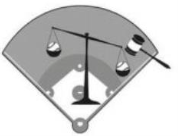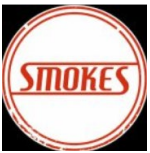Addressing the registrability of marks for cannabis-related products, the Trademark Trial & Appeal Board upheld an Examiner’s refusal to register marks for an “essential oil dispenser” based on extrinsic evidence that the dispenser was primarily used with cannabis extract. In re National Concessions Group, Inc., Ser. Nos. 87168058 and 87183434 (TTAB May 3, 2023) (Thurmon, Greenbaum, English, ATJs) (precedential).
National Concessions sought registration of the word mark BAKKED and a stylized drop logo for an “essential oil dispenser, sold empty, for domestic use” on the Principal Register. The specimen provided by National Concessions illustrated the two marks on an oil dispensing pen identified as “THE DABARATUS.” After reviewing National Concessions’ website—where THE DABARATUS was touted as “THE ALL-IN-ONE TOOL FOR DABBING” that delivers “THE PERFECT DOSE OF CANNABIS EXTRACT”—the Examiner concluded that THE DABARATUS was unlawful drug paraphernalia under the Controlled Substances Act (CSA) and refused registration of the marks. National Concessions appealed on the following three grounds:
- The goods are not drug paraphernalia because they are used to dispense essential oil.
- The exemption in Section 863(f)(1) of the CSA applies because National Concessions was permitted to sell the goods under Colorado state law.
- The exemption in Section 863(f)(2) of the CSA applies because the goods are traditionally intended for tobacco products.
After briefing, the Board suspended the appeal and remanded the applications to the Examiner to request information from National Concessions concerning the legislative histories of Sections 863(f)(1) and (2) of the CSA and the relevant provisions of Colorado state law. The Examiner then issued a Supplemental Final Office Action maintaining the refusal of both marks, and the Board continued proceedings.
The Board began its analysis by outlining the relevant provisions of the CSA, explaining that for a mark to be eligible for registration, the goods must be legal under federal law. Under Section 863(a) of the CSA, it is unlawful to sell “drug paraphernalia,” which is defined as “any equipment, product, or material of any kind which is primarily intended or designed for use in … introducing into the human body a controlled substance, possession of which is unlawful under [the CSA],” including marijuana and marijuana-based preparations. The CSA includes exemptions for any person authorized by local, state or federal law to distribute such items (Section 863(f)(1)) or any item that is traditionally intended for use with tobacco products (Section 863(f)(2)).
The Board first found that National Concessions’ “essential oil dispenser” was prohibited drug paraphernalia under the CSA, even though the product was not unlawful as described in the application. The Board noted that extrinsic evidence, such as an applicant’s marketing materials or product instructions, can be used to show a violation of the CSA even if the application does not reveal a per se violation. After considering National Concessions’ website as well as third-party websites and articles, the Board agreed with the Examiner that National Concessions’ “essential oil dispenser” was primarily intended to dispense cannabis oil for “dabbing”—a method of inhaling superheated cannabis concentrates. The [...]
Continue Reading
read more

 Subscribe
Subscribe




